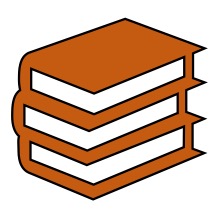On This Page:
- Acquiring Academic Literacy
- Responding to Linguistically Diverse Students’ Writing
- For Further Reading
- Related Links
The University of Illinois celebrates “our diverse community” as the “most powerful asset” of our world-class university. As  our campus welcomes students and faculty from the state of Illinois and beyond, we strive to create an inclusive and pluralistic learning and research environment. On a linguistically diverse campus, where community members reflect the
our campus welcomes students and faculty from the state of Illinois and beyond, we strive to create an inclusive and pluralistic learning and research environment. On a linguistically diverse campus, where community members reflect the
languages of more than 100 countries, not to mention the many U.S. regional and cultural dialects of English, those of us who teach and mentor students in and through writing can be aware of strategies for respecting students’ linguistic diversity while also imparting the skills that will help students make informed decisions about their language use in academic, professional, and personal contexts.
Acquiring Academic Literacy:
Our students have complex and varied language repertoires. All students encounter challenges as they acquire advanced academic literacy proficiency: Language and literacy development is a process that takes time and practice, involves adapting to new contexts, and is individualized and nonlinear. Students’ literacy skills—speaking, listening, reading, and writing—may develop at different rates. These challenges to developing advanced academic proficiency in Standard American English may be exacerbated for students who speak non-dominant dialects, international students for whom English is a second language, and domestic second language students who might identify as early arriving (students who have been in the U.S. longer than 8 years), late arriving (students who have been in the U.S. for less than 8 years), or Gen 1.5 (U.S.-born children of first-generation immigrant parents whose primary language was not English).
Our students’ literacy educations may be similarly complex, with some having more experience as “ear” learners and others’ as “eye” learners. Eye learners—as you might expect—“have learned principally through their eyes, studying vocabulary, verb forms, and language rules. These students know, understand, and can explain English grammar; they have usually learned grammar through methodologies that focus on rule learning” (Ferris, 2009, p. 30, qtg. Reid, 1998/2006). In contrast, “ear” learners “have learned English by being suddenly immersed in the language and culture of the U.S. … They listened, took in oral language (from teachers, TV, grocery clerks, friends, peers) and subconsciously began to form vocabulary, grammar, and syntax rules, learning English principally through oral trial and error” (Ferris, 2009, p. 31, qtg. Reid, 1998/2006). Generally speaking, “ear” learners may not be fully literate in their first language due to disrupted schooling; “eye” learners are those we tend to think of as the “typical” international student—though be wary of generalizations.
As educators, we can learn about our students’ cultural and linguistic backgrounds and also be attentive to how we create opportunities for students to expand their vocabularies, explore their academic voices, and navigate the communicative terrain of their chosen disciplines. Crucially, we should be aware that the feedback we provide to student writing may have unintended consequences. Research has shown that second language writers and speakers of non-mainstream dialects routinely receive feedback that leaves them feeling overwhelmed, unmotivated, frustrated, and anxious about their academic abilities (e.g., Smitherman & Villanueva, 2003; Ferris, 2018), all of which have implications for students’ self-efficacy, feelings of belongingness, persistence, and graduation.
Responding to Linguistically Diverse Students’ Writing:
Instructors need to be aware of the assumptions about language that we may unconsciously carry and that may influence our interactions with linguistically diverse students. For instance, public discussions of writing often equate writing skills with sentence-level correctness, echoing the refrain “Students today just can’t write!” It’s important to acknowledge that native English-speaking undergraduate writers have averaged the same number of formal errors per 100 words since at least 1917—just over 2 (Connors & Lunsford, 1988; Lunsford & Lunsford, 2006). Moreover, to make gains in writing complexity, students need feedback on global elements of the text: content, analysis, structure, development, structural coherence, integration of sources, and so on.
Instructors can create learning spaces where students’ cultural and linguistic backgrounds can be affirmed, explored, and treated as different rather than deficient. When teaching writing or responding to writing, you might try:
- Using language about audience rather than language of error
- Explaining differences between Standard English and other varieties of English
- Allowing students to use comfortable language in different stages of the writing process
Try this process when responding to in-progress or final drafts:
1. Read the entire draft without commenting (do your best to read through accent and focus on ideas)
2. Identify what the student is doing well
3. Respond to the major ideas / concepts / analysis: meaningfully interacting with the student’s knowledge-making efforts using the tips on our “Responding to Student Writing” page.
4. Mark places where errors interfered with your comprehension. Selectively comment on errors in grammar, syntax, or accuracy, by:
a) Distinguishing between “global errors” (like a wrong word, e.g., “The tension was at its pick”) that interfere with communication and “local errors” that might be noticeable and distracting but rarely impede comprehension (like a verb tense error that readers understand in context, e.g., “Last summer I go to visit my grandmother in L.A.”) (Ferris, 2011, pp. 87-88).
b) Picking 1-2 patterns (e.g., verb tense, comma splices)
c) Focusing on a paragraph or section
For options b and c, be sure to communicate to the writer what you focused on and why so that they know how to process your feedback.
5. When applicable, recommend resources (handbooks, Writers Workshop, websites, etc.)
Finally, if you’re having trouble formulating a response or prioritizing what to focus on in a student’s text, don’t try to address the issue through marginal comments. Instead, invite the student to office hours to talk with them about their prior experiences writing in academic English, their ideas, and their concerns about the text.
For Further Reading:
- Bazerman, C., et al. (2018). The Lifespan Development of Writing. National Council of Teachers of English.
- Conference on College Composition and Communication. (2014). Statement on Second Language Writing and Writers.
- Conference on College Composition and Communication. (1974). Students’ Right to Their Own Language.
- Horner, B., Lu, M. Z., Rosyter, J. J., & Trimbur, J. (2011). Language difference in writing: Toward a translingual
 approach. College English, 73.
approach. College English, 73. - Ferris, D. R. (2009). Teaching College Writing to Diverse Student Populations. U of Michigan Press.
- Ferris, D. R. (2011). Treatment of Error in Second Language Student Writing. 2nd ed. U of Michigan P.
- Ferris, D. R. (2018). “They said I have a lot to learn”: How teacher feedback influences advanced university students’ views of writing. Journal of Writing Response, 4.
- Lunsford, A., & Lunsford, K. (2008). “Mistakes are a fact of life”: A National Comparative Study. College Composition and Communication, 59.
- Smitherman, G., & Villanueva, V. (2003). Language Diversity in the Classroom. Southern Illinois UP.
